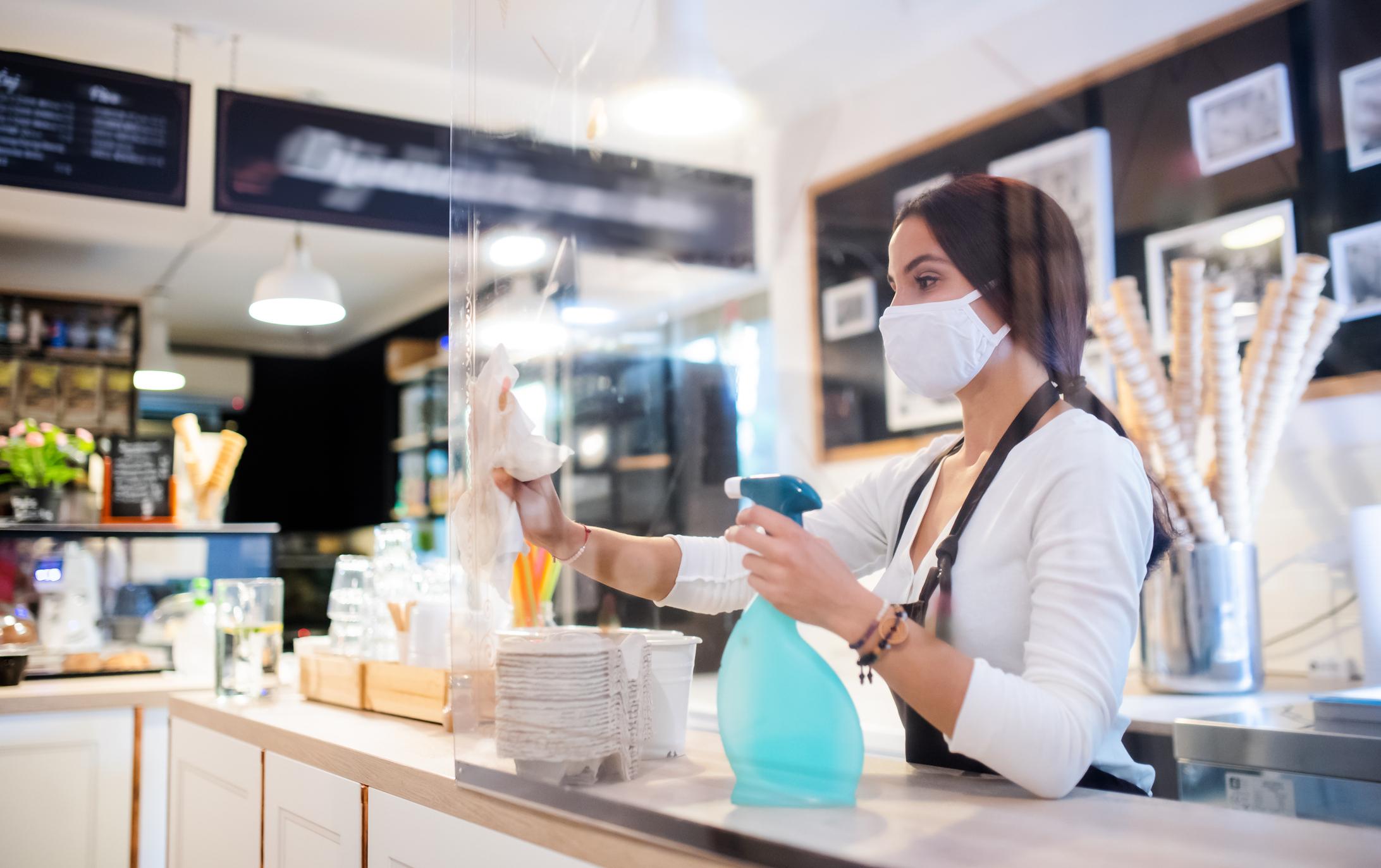MENU
Start
- Best Small Business Loans for 2024
- Businessloans.com Review
- Biz2Credit Review
- SBG Funding Review
- Rapid Finance Review
Our Recommendations
- 26 Great Business Ideas for Entrepreneurs
- Startup Costs: How Much Cash Will You Need?
- How to Get a Bank Loan for Your Small Business
- Articles of Incorporation: What New Business Owners Should Know
- How to Choose the Best Legal Structure for Your Business
Our Guides
- Business Ideas
- Business Plans
- Startup Basics
- Startup Funding
- Franchising
- Success Stories
- Entrepreneurs
Small Business Resources
Grow
- The Best Credit Card Processors of 2024
- Clover Credit Card Processing Review
- Merchant One Review
- Stax Review
Our Recommendations
- How to Conduct a Market Analysis for Your Business
- Local Marketing Strategies for Success
- Tips for Hiring a Marketing Company
- Benefits of CRM Systems
- 10 Employee Recruitment Strategies for Success
Our Guides
- Sales & Marketing
- Finances
- Your Team
- Technology
- Social Media
- Security
Small Business Resources
Lead
- Best Business Phone Systems of 2024
- The Best PEOs of 2024
- RingCentral Review
- Nextiva Review
- Ooma Review
Our Recommendations
- Guide to Developing a Training Program for New Employees
- How Does 401(k) Matching Work for Employers?
- Why You Need to Create a Fantastic Workplace Culture
- 16 Cool Job Perks That Keep Employees Happy
- 7 Project Management Styles
Our Guides
- Leadership
- Women in Business
- Managing
- Strategy
- Personal Growth
Small Business Resources
Find
- Best Accounting Software and Invoice Generators of 2024
- Best Payroll Services for 2024
- Best POS Systems for 2024
- Best CRM Software of 2024
- Best Call Centers and Answering Services for Busineses for 2024
Our Recommendations
Can Creativity Be Learned?

Table of Contents
You don’t have to work in a traditionally artistic industry to utilize the power of creativity. This in-demand talent can help professionals in any arena spur innovation and strengthen brainstorming. Creativity is often seen as an inherent gift for a lucky few, not a skill that can be honed. However, while many people are naturally creative, anyone can harness and sharpen their innate creativity to enhance their careers and enrich their lives. We’ll explain more about creativity and how anyone can develop and apply this skill.
What is creativity?
When you think of “creativity,” you might immediately consider artistic work or imaginative thinking. However, creativity goes far beyond those narrow concepts.
“Creativity is easily defined — it is the process of generating new ideas,” explained Tina Seelig, faculty director of the Stanford Technology Ventures Program, the entrepreneurship center at the Stanford University School of Engineering.
Generating new ideas is a valuable skill for any industry, especially when brainstorming solutions or innovative ideas that might set your business apart from its competitors. Businesses value creative workforces that can help foster more intentional paths forward.
“[Creativity] is particularly important in industry because the world is changing incredibly quickly and breakthrough ideas are required to stay competitive,” Seelig noted. “Generating fresh ideas is actually quite challenging because most people find it difficult to get beyond obvious, incremental solutions. True creativity requires the ability to break new ground, which requires significant effort.”
Creativity and innovation are related but separate concepts. Creativity is the thought process behind new ideas and fresh perspectives, while innovation is creativity in action.
Why creativity can be learned
According to Seelig, the biggest myth about creativity is that it’s something you can’t learn. In reality, like many in-demand career skills, creativity can be learned, sharpened and applied. It’s a renewable resource anyone can tap into anytime.
“Creativity is critically important in everything we do, including designing products, growing businesses and building alliances between nations,” Seelig explained. “We are literally inventing the future every moment. These skills can be learned.”
To demonstrate why creativity can be learned, you must move beyond thinking about creativity as artistry and recognize it in the following forms:
- Creativity is a natural skill in everyone: Creativity can be learned because it’s a natural skill in all of us. While it might come easier to some, anyone can foster their ability over time. “We are all naturally creative and, like every other skill, some people have more natural talent than others,” said Seelig. “However, everyone can increase [their] creativity, just as everyone can increase [their] musical or athletic ability, with appropriate training and focused practice. We can all learn tools and techniques that enhance creativity and build environments that foster innovation.”
- Creativity is problem-solving: It’s essential to view creativity not just as artistic talent or wild imagination but as inventiveness and problem-solving skills. You may not think of yourself as innately creative, but you likely have examples of times you’ve made business decisions that solved problematic workplace or life dilemmas. “The human brain evolved over millions of years from a small collection of nerve cells with limited functionality to a fabulously complex organ that is optimized for innovation,” Seelig explained. “Our highly evolved brains are always assessing our ever-changing environment, mixing and matching our responses to fit each situation.”
- Creativity is speaking and thinking: Thinking and speaking are creative reactions and expressions that we can harness for our benefit. For example, we often create narratives about certain people or situations before ever knowing them. This is an instinct bred from our creative abilities. “Every sentence we craft is unique, each interaction we have is distinctive and every decision we make is done with our own free will,” Seelig clarified. “That we have the ability to come up with an endless set of novel responses to the world around us is a constant reminder that we are naturally inventive. These skills can be enhanced with specific tools and techniques.”
Use your innate creativity to brainstorm creative business ideas that will flourish in your industry or unique niche.
How to harness the power of creativity
Having someone tell you that you’re innately creative is one thing. Harnessing your inner creativity and applying it to your life is quite another. Here are five concrete ways to build creativity as a skill.
1. Use tech tools to strengthen creativity.
Creativity is a natural and powerful skill, but working with tech tools can help it thrive. Here are some examples:
- Creative software tools: Software tools like Adobe Creative Cloud and Canva can help you tap into your creativity, allowing risk-free experimentation when creating social media posts and marketing materials.
- Project management tools: Project management software solutions like Trello and Basecamp can help you organize and visualize your project’s process, spurring new ideas.
- Mind mapping tools: Mind-mapping apps facilitate visual brainstorming, so you can center your thoughts, ideas and concepts clearly. You can uncover connections you may not have seen before and link concepts.
- Collaboration tools: Workplace collaboration tools like Microsoft Teams and Slack can help you connect with team members and spark new ideas to solve problems.
Any technology that helps you look at problems and projects from fresh perspectives can help spur creativity. And the more you work with them, the more you’ll hone creativity as a skill. “At the core [of creativity] is the ability to look at problems from different angles, to connect and combine concepts and the ability to challenge traditional assumptions,” said Seelig. “These are job skills that look great on a resume but require practice to master.”
2. Merge your internal world with your external environment.
We all have unique life experiences that help create our internal worlds. Furthermore, every one of us is built differently. Some are more sensitive and whimsical, while others are more grounded and analytical. Neither is right or wrong, but who we are at our cores will impact our creativity levels and how we honor them.
“After a dozen years teaching courses on creativity and innovation at Stanford University, I have created a model which I call the Innovation Engine that illustrates how creativity results from the interplay of our internal world and our external environment,” Seelig shared. “Essentially, your knowledge provides the fuel for your imagination, which is the catalyst for the transformation of information into new ideas.”
How we show up in the world — and how the world shows up for us — influences our perceptions and, in turn, our creativity. Pay attention to how your unique perspective influences your imagination and creativity.
“This process is deeply influenced by a myriad of factors in your environment, including the physical space, the teams with which you work and the implicit and explicit rules and rewards,” Seelig continued. “The Innovation Engine is sparked by your attitude, which sets all the parts in motion.”
3. Build an environment that fosters creativity.
Seelig recommended building environments and surroundings that foster your creativity. For example, if you’re more creative during morning hours, wake up earlier to dedicate time to your creative flow. If there’s a more productive day of the week for you, experiment with creativity that day. If you like a group dynamic, host brainstorming sessions with your team and encourage authentic expression. Such routines and efforts can impact how we capitalize on our creativity.
“[Craft] spaces that are conducive to creative problem-solving and instituting rules, rewards and incentives that reinforce creative behavior,” Seelig advised.
4. See problems as opportunities.
Many individuals shut down in the face of conflict and feel creatively stifled. However, if you can shift the narrative and view problems as opportunities, you can accomplish more than you realize.
“With enhanced creativity, instead of problems we see potential, instead of obstacles we see opportunities and, instead of challenges, we see a chance to create solutions,” Seelig explained.
When you see problems as opportunities, you shift your mindset and are more likely to push through roadblocks, look beyond obvious answers and develop creative solutions. “You can look at every situation, every challenge and every opportunity from different angles,” Seelig explained. “Each angle provides a different perspective on the situation and unleashes new insights.”
5. Support experimentation to spur creativity.
Freedom to experiment and think outside the box is crucial to harnessing creativity, especially in the workplace. A positive workplace culture that allows for experimentation — and mistakes — is also essential.
“Without the drive to come up with breakthrough ideas and the confidence that a creative solution exists, it is unlikely that one will be found,” said Seelig. “In addition, we all live and work within communities with cultures that have a powerful impact on how we feel, think and act. If the company culture does not support experimentation and reward the generation of new ideas, then it is unlikely that creativity will flourish.”
Another part of experimenting with creative thinking is questioning how you view life and all its complexities.
“We are creating frames for what we see, hear and experience all day long and those frames both inform and limit the way we think,” Seelig explained. “In most cases, we don’t even think about the frames — we just assume we are looking at the world with the proper set of lenses. However, being able to question and shift your frame of reference is an important key to creative problem-solving.”
Use decision-making tools and techniques to spur creativity by organizing your thoughts and helping you see problems in a new light.
Creativity is a superpower
Harnessing creativity enables you to view challenges as opportunities and bring authenticity to your work. Creativity in the workplace is a powerful skill that can be learned, honed and developed, no matter your innate creativity levels. While some believe people are either born with a creative knack or not, this is far from true. We are all naturally creative and can harness this skill through intentional practice, experimentation and supportive routines.
Sean Peek contributed to this article. Source interviews were conducted for a previous version of this article.














